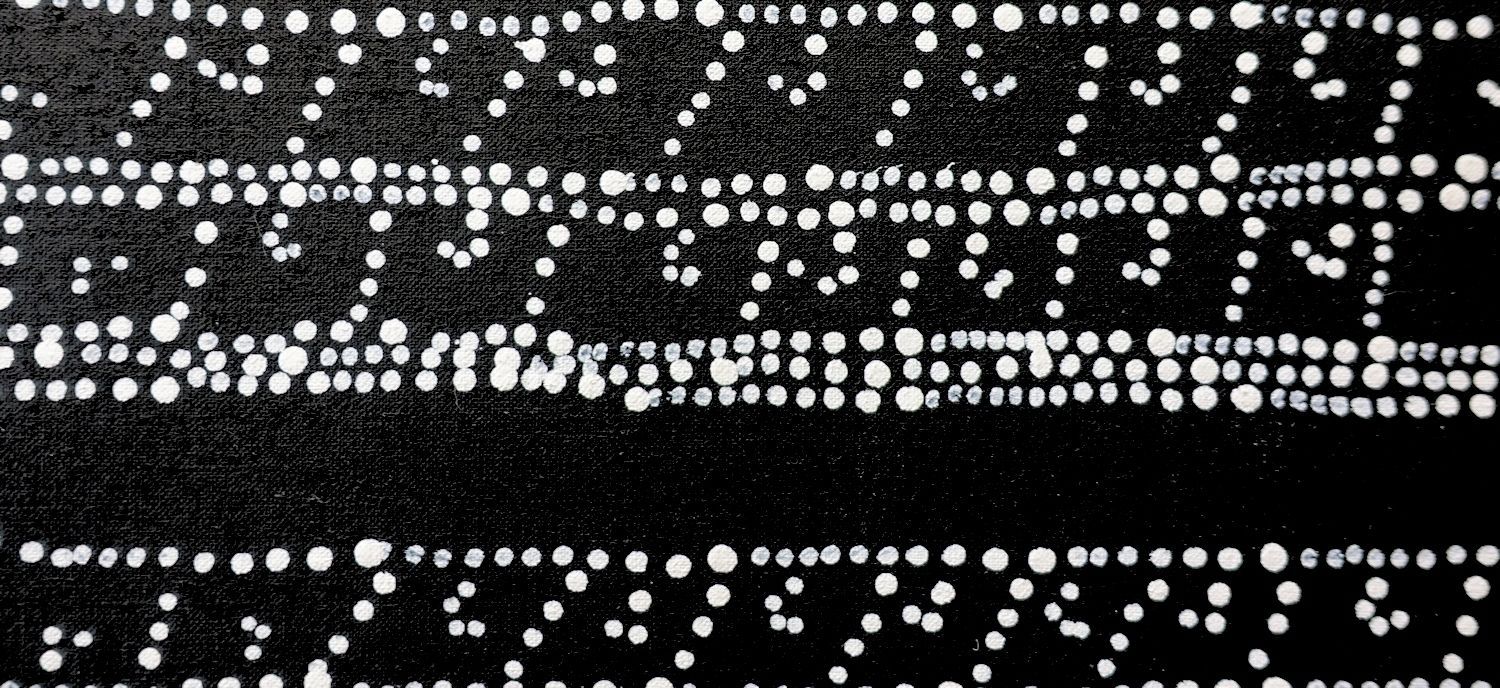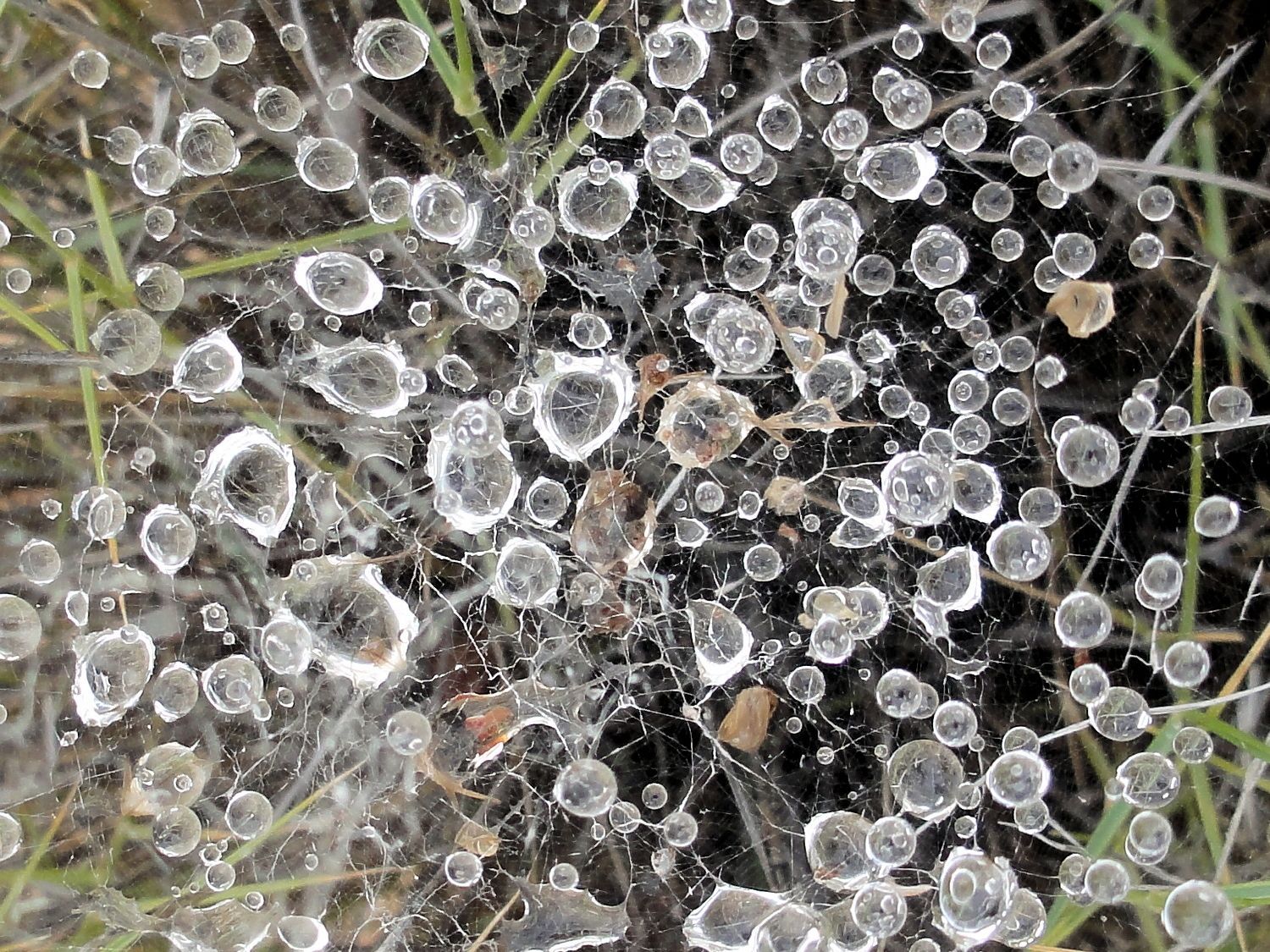Kinship - the web of inter-connectedness
By Roslyn Premont, 8th September 2017
Skin names - relationships to each other and country.
Relationships in Aboriginal society are quite complex – my ‘skin’ name is Napurrurla. Years ago when I received this name I did not know what was involved with the living of it. Your skin name is a way of placing you in the community – it determines your responsibilities - who you care for; who you can turn to and ask for support, who you can be close friends with and marry, and those that you have to avoid.
It was artist Pansy Napangardi who gave me my name in 1987 when I came to Alice Springs from working at Aboriginal Arts Australia in Sydney to run the Alice Springs outlet, The Centre for Aboriginal Artists. This was the first of the five government galleries, established in 1972 as an outlet primarily to market the fine craft from the Pitjantjatjara homelands.
Pansy was one of the first women to be represented by Papunya Tula Artists. We had met when she had visited the Sydney gallery and she was very welcoming when I arrived in Alice Springs, introducing me to many of her friends and relations and took me and my partner out bush hunting. Discovering the magic of the Central Australian landscape was intoxicating and I was immediately hooked.
As time went by, I used to wonder why there was so many Napangardi’s surrounding me – then I realised, I am their mother! This involves me in responsibilities to the individual and the families. Dorothy Napangardi was one of these women and even though we were the same age, she always referred to me as ‘mother’. Introductions to others were always started by how we were related in the kinship system - this is your auntie, your grandmother, your father etc. It was sometimes funny to see an old woman called my granddaughter etc. as an example but this made real sense to them.
In the Central Australian kinship system there are 8 names in this web of inter-connectedness - there are 2 circles of four names. The women’s start with N whereas the men start with Tj or J - i.e. Napangardi’s brother would be Tjapangardi or Japangardi depending on the language group (Pintupi or Warlpiri etc).
In European culture we tend to value peoples worth by what they have accumulated, what they own. In Dorothy’s culture she is judged by what she has given and how she supports. Through her work she supported a large extended family, her friends and the community, maybe close to 150 people. People can look at Aboriginal artists and if they are famous and their work sells for high prices, wonder why they do not have expensive houses, many possessions and large bank accounts, maybe they think that they are not receiving the money from the work and imagine galleries perhaps were not dealing honestly. The monies do go to the artists – and the money does its job of supporting the family and community, in their culture – which has a different base to our own more individualistic society which values the dollar beyond the community.
If it takes living on the edge to be a great artist then bush Aboriginal artists know what it is to live on the edge, even when they are recognised and rewarded for their work they are obliged to live in fringe camps, subject to domestic violence, even when it is not personal they are surrounded by it. They do not have stability, tranquility or space to make plans for the future. What they do have is a big family with all the good and the bad:- this family is part of a web tracing the past back to where they come from, their ancestors still live in the landscape - the landscape you see mapped in the work.
This work may be an overview of the county extending hundreds of kilometres, or it may be a close up of one rock or one salt pan. Each of the works they produce is part of this vision, this dreaming, as part of the web of the family tracing its roots back to the ancestors. The complexities of these relationships with family and country can be seen in the work of Dorothy and her daughters as an example.
Dorothy is a Napangardi, she has her own country of Mina Mina, her daughters are Nangala they trace their country back to their fathers which is Pirlinyanu. Napangardi country is Mina Mina, which is close to the great salt lake of Lake Mackay in the Northern Territory near the boarder of Western Australia.
This county is part of the Karnta kurlangu Jukurrpa which is an important Women’s Dreaming, her paintings sometimes trace the journey of ancestral women as they traveled from the east to the west in the dreaming singing the landscape into existence as they went. When they arrived at Mina Mina which are salt lakes surrounded by sandhills the songs they sang caused desert oak trees to come out of the ground and the first digging sticks were born.
All Napangardi’s paintings concentrate on various aspects of the country from the salt incrustations around the salt lakes, bush fires through spinifex country in the black and gold works here and the wind blowing in the sandhills where you can feel the wind shifting the sand. The straight lines are the upright desert oak trees, and the little hooks you see throughout the paintings are women, a subtle reminder that these women are still in the landscape.

The little hooks you see throughout the paintings are women … (this fragment of Karntakurlangu Jukurrpa by Dorothy Napangardi)
Her daughters, Julie and Sabrina are Nangala, this skin group is responsible for the water dreaming (Ngapa Jukurrpa) their country Pirlinyanu is a rocky outcrop which is an important link in the water dreaming. What you see in their work is the cluster of rocks and you can feel the storm brewing with the clouds and the onset of the storm, often you will see little openings in the work which if you could read them in relation to their country it would give you the instruction of what rocks to move to have access to fresh water.
This country is about halfway between the community of Yuendemu and Mina Mina (Dorothy’s Country) and you could easily travel by this rocky outcrop and not realise its significance. Sometimes sacred sites can be as simple as a lone tree. One thing is certain. All paintings have meaning and are connected to the land and the artist’s connection to it. In the ancestral period, known as the Tjukurrpa or Dreaming, this land was shaped by creative spirits that originally came out of the earth or sea and their spirits remain there today so therefore these places are deemed sacred.
As an artist, you cannot paint any subject but only the stories that your kinship is related to. However, you are not restricted in expression and are free to have an individual approach with regards to colour and design as you celebrate the spirit and its relationship to land.
It is certainly an honour to have worked in this field for more than 30 years and to be continually stimulated by it.

Kinship - the web of inter-connectedness (like dewdrops caught in spider webs on spinifex)
GALLERY GONDWANA
ABN: 75 009 652 046
All prices displayed in AUD, GST included.
Gallery Gondwana acknowledges the First Peoples of this land and recognises their continuous connection to culture, community and Country.
CONTACT US
+61 417 75 74 75
+61 417 27 44 31
roslyn@gallerygondwana.com.au
PO Box 3770, Alice Springs NT 0871 Australia
Vatu Sanctuary
Saturate yourself and be inspired by the power of Aboriginal art in a living gallery environment.

All Rights Reserved | Gallery Gondwana